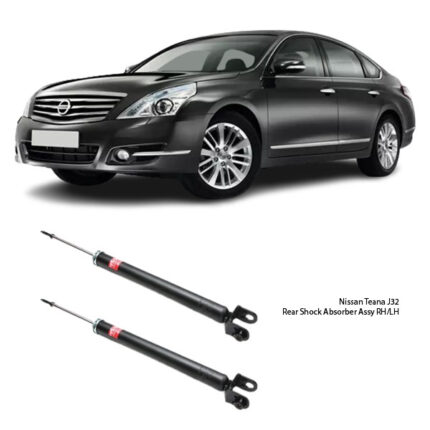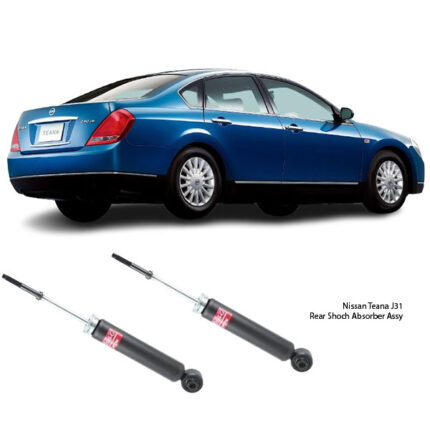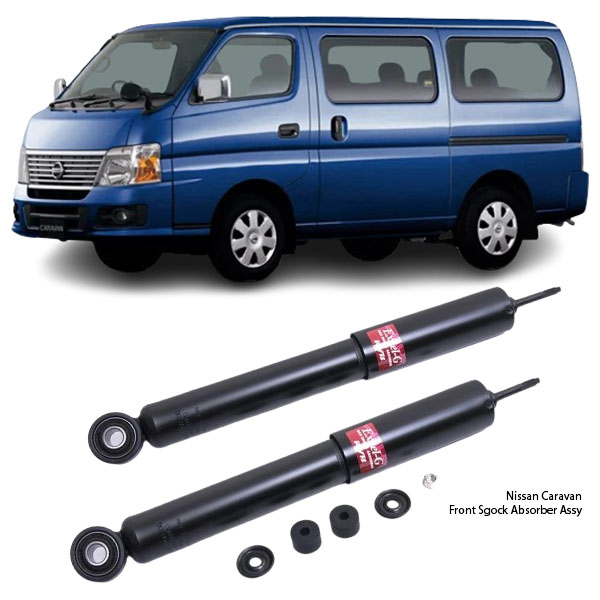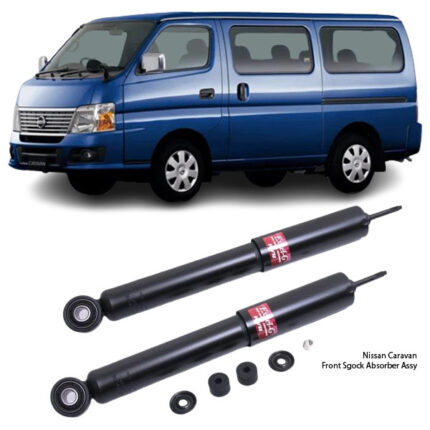-8%
Get Nissan Caravan E25 Front Shock Absorber Assy 344463 in Kenya
A front shock absorber assembly is a critical component of a vehicle’s suspension system, responsible for absorbing shocks, maintaining stability, and ensuring ride comfort. Whether you’re driving on smooth highways or rough terrains, a high-quality front shock absorber assembly is essential for a safe and comfortable ride.
What is a Front Shock Absorber Assembly?
A front shock absorber assembly (also called a strut assembly in some vehicles) is a complete suspension unit that includes:
Shock Absorber (Damper): The main component that absorbs road shocks
Coil Spring (If part of a Strut Assembly): Supports vehicle weight and absorbs impact
Mounting Bushings: Rubber or polyurethane parts that cushion vibrations
Piston & Hydraulic Fluid: Controls motion through resistance
Dust Cover/Boot: Protects the shock from dirt and debris
The front shock absorbers help in maintaining front-wheel stability, steering response, and braking efficiency.
How Does a Front Shock Absorber Assembly Work?
The shock absorber works by damping the motion of the suspension system, reducing bouncing and vibrations from the road.
Here’s how it functions:
Absorbs Road Impacts: Reduces the impact from bumps, potholes, and rough surfaces
Improves Handling & Steering Response: Ensures better front-wheel traction
Enhances Ride Comfort: Minimizes vibrations and jolts
Supports Load Carrying: Keeps the front of the vehicle stable when carrying heavy loads
Prevents Excessive Tire Wear: Keeps tires evenly in contact with the road
Without a functional front shock absorber assembly, the vehicle would experience unstable steering, increased braking distance, and uncomfortable rides.
Types of Front Shock Absorbers
There are different types of front shock absorbers, designed for different driving conditions and vehicle needs.
Twin-Tube Shock Absorbers
Most common type
Uses two tubes (inner and outer) for oil displacement
Cost-effective and durable
Ideal for daily driving
Monotube Shock Absorbers
Higher performance than twin-tube
Single tube with gas and oil separation
Better heat dissipation and damping control
Used in sports and performance vehicles
Gas-Charged Shock Absorbers
Reduces foaming in hydraulic fluid for consistent performance
Provides firmer handling and stability
Ideal for high-speed driving and rough roads
Coilover Shock Absorbers
Combines shock absorber and coil spring in one unit
Adjustable for height and stiffness
Used in racing and performance vehicles
Adjustable Shock Absorbers
Allows adjustment of damping stiffness
Ideal for off-road and performance vehicles
Offers custom ride settings
The right shock absorber depends on your vehicle type, driving style, and road conditions.
Signs Your Front Shock Absorber Assembly Needs Replacement
A failing front shock absorber can lead to poor handling, increased stopping distance, and ride discomfort. Watch out for these warning signs:
Excessive Bouncing: The front of the car continues bouncing after hitting bumps
Poor Steering Response: Difficulty steering or feeling unstable at high speeds
Longer Braking Distance: Reduced traction leads to delayed braking
Uneven Tire Wear: Cupped or bald spots on front tires
Leaking Hydraulic Fluid: Visible oil leakage from the shock absorber
Noisy Suspension: Clunking or knocking sounds over bumps
Front End Dips When Braking: The nose of the car dives forward during braking
If you notice any of these symptoms, it’s time to replace your front shock absorbers.
When Should You Replace Your Front Shock Absorbers?
Recommended Replacement Interval:
80,000 – 120,000 km (50,000 – 75,000 miles) under normal driving conditions
40,000 – 80,000 km (25,000 – 50,000 miles) for rough terrain or aggressive driving
Frequent driving on rough roads, towing heavy loads, or high-speed driving may require earlier replacements.
How to Replace a Front Shock Absorber Assembly?
Replacing a front shock absorber assembly requires mechanical skills and proper tools.
Tools Needed:
Jack & jack stands
Socket & wrench set
Torque wrench
Spring compressor (for strut assembly)
New front shock absorber assembly
Step-by-Step Process:
Lift the Car & Remove the Front Wheel – Secure the car with jack stands
Disconnect Suspension Components – Unbolt the sway bar, brake lines, and control arm
Remove the Old Shock Absorber Assembly – Use a spring compressor if necessary
Install the New Shock Absorber Assembly – Align it properly and secure bolts
Reattach Suspension Components – Tighten all bolts to factory specifications
Reinstall the Wheel & Lower the Car
Test Drive & Check for Performance Issues – Ensure a smooth and stable ride
Caution: If your car has electronic or air suspension, additional steps may be required.
Maintenance Tips for Longer Shock Absorber Life
Avoid Overloading Your Vehicle – Reduces strain on the shocks
Drive Carefully Over Bumps & Potholes – Prevents excessive wear
Check for Leaks & Damage Regularly – Spot issues early
Replace in Pairs – Ensures balanced handling and stability
Perform Routine Suspension Inspections – Every 20,000 km
A well-maintained suspension ensures a comfortable and safe driving experience.
Follow us on Facebook for more parts.




